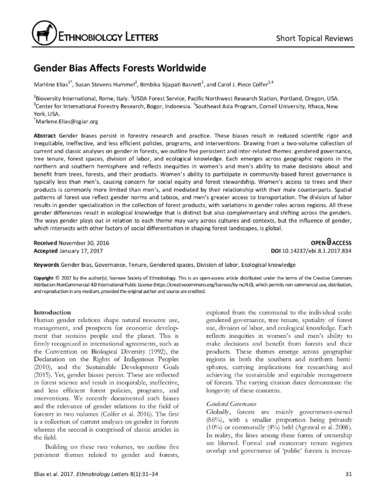Gender bias affects forests worldwide
Abstract
Gender biases persist in forestry research and practice. These biases result in reduced scientific rigor and inequitable, ineffective, and less efficient policies, programs, and interventions. Drawing from a two-volume collection of current and classic analyses on gender in forests, we outline five persistent and inter-related themes: gendered governance, tree tenure, forest spaces, division of labor, and ecological knowledge. Each emerges across geographic regions in the northern and southern hemisphere and reflects inequities in women’s and men’s ability to make decisions about and benefit from trees, forests, and their products. Women’s ability to participate in community-based forest governance is typically less than men’s, causing concern for social equity and forest stewardship. Women’s access to trees and their products is commonly more limited than men’s, and mediated by their relationship with their male counterparts. Spatial patterns of forest use reflect gender norms and taboos, and men’s greater access to transportation. The division of labor results in gender specialization in the collection of forest products, with variations in gender roles across regions. All these gender differences result in ecological knowledge that is distinct but also complementary and shifting across the genders. The ways gender plays out in relation to each theme may vary across cultures and contexts, but the influence of gender, which intersects with other factors of social differentiation in shaping forest landscapes, is global.

